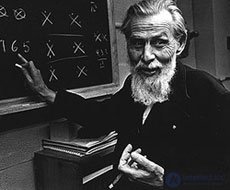Lecture
The emergence of the premises of artificial intelligence (from 1943 to 1955)


 |
They organized a two-month workshop in Dartmouth in the summer of 1956. A total of 10 participants attended the seminar, including Trenchard Moore from Princeton University, Arthur Samuel from IBM, as well as Ray Solomonov and Oliver Selfridge from the Massachussetts Institute of Technology ( MIT ).
Two researchers from the Carnegie Institute of Technology, Allen Newell and Herbert Simon, literally monopolized the whole show. While others could only share their ideas and in some cases show programs for specific applications such as drafts, Newell and Simon could already demonstrate a reasoning program, Logic Theorist (LT), or a theoretical theorist about which Simon stated: "We invented a computer program capable of thinking in non-numeric terms and therefore solved a respectable problem about the relationship between mind and body."
Shortly after this seminar, the program showed its ability to prove most of the theorems of Russell and Whitehead Principia Mathematica. It was reported that Russell was delighted when Simon showed him that this program offered a proof of one theorem, shorter than in Principia. The editors of the Journal of Symbolic Logic were less prone to emotion; they refused to accept the article, whose co-authors were Newell, Simon, and the Logic Theorist program.
The Dartmouth Seminar did not lead to the emergence of any major new discoveries, but it made it possible for all the most important figures in this scientific field to get acquainted. They, as well as their students and colleagues from the Massachusetts Institute of Technology, Carnegie Mellon University, Stanford University and IBM have occupied a leading position in this area for the next 20 years.
Perhaps the longest preserved result of this seminar was an agreement to adopt a new name for this field, proposed by McCarthy, artificial intelligence. Perhaps it would be better to call this scientific field “computational rationality”, but the name “artificial intelligence” was attached to it.
Analysis of proposals on the subject of reports for the Dartmouth seminar allows us to understand the reason for the need to transform artificial intelligence into a separate area of knowledge.
Why it would not be possible to publish all the work performed in the framework of artificial intelligence, under the flag of management theory, or operations research, or decision theory, which ultimately have goals similar to artificial intelligence? Or why artificial intelligence is not considered as a field of mathematics?
The answer to these questions, firstly, is that from the very beginning artificial intelligence absorbed the idea of modeling such human qualities as creativity, self-improvement and the use of natural language. These tasks are not considered in any of these areas. Secondly, another answer is the methodology.
Artificial intelligence is the only of the above areas, which is certainly one of the areas of computer science (although in the study of operations great importance is also attached to computer modeling), in addition, artificial intelligence is the only area in which attempts are made to create machines acting autonomously in a complex, changing environment.
Comments
To leave a comment
Artificial Intelligence. Basics and history. Goals.
Terms: Artificial Intelligence. Basics and history. Goals.